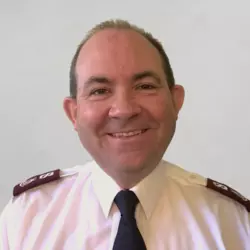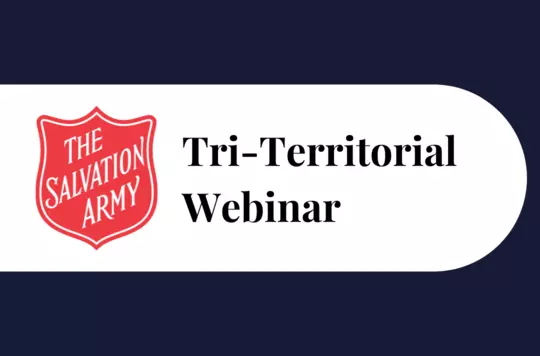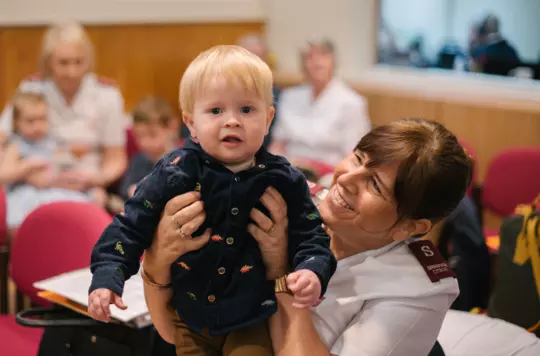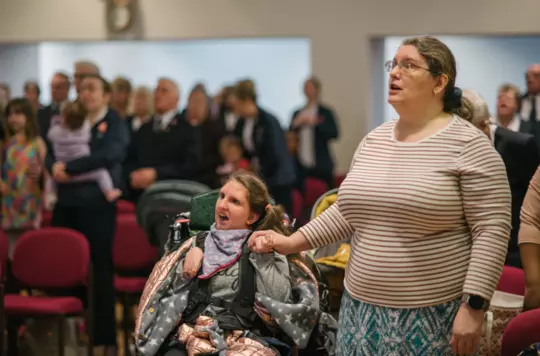13 April 2024
Homelessness Services: Discerning the way forward
Major Julian Watchorn interviews Nick Redmore

Nick Redmore talks to Major Julian Watchorn about the new strategy for Homelessness Services.
Ask most people what they know about The Salvation Army and fairly high on their list will be its work with people experiencing homelessness. For well over a century this important work has been at the heart of the Movement’s ministry.
Although the fundamental principle of helping people without a home has not changed, the forms of accommodation offered to alleviate this situation have, as have the funding streams offered to assist in addressing them at both a local and national level.
It was in seeking to work within this maelstrom of uncertainty that a new strategy for Homelessness Services was born.
‘For decades, the Army has been challenged by the changing whims and circumstances of local authorities, financial limitations and political preferences,’ says Director of Homelessness Services Nick Redmore. ‘Being pulled and pushed in the investment choices that it was being asked to make, and facing a series of difficult decisions around the future of its larger buildings, the board of The Salvation Army Trustee Company (SATCo) asked for a clearer picture of the direction Homelessness Services wanted to take.’
The response of the Homelessness Services leadership team was one of prayerful reflection. Rather than an instant response, the team chose to step back and seek to understand and determine God’s will, taking time to listen as God spoke through others.
‘This process of conversation with service users, divisions, Homelessness Services staff members, chaplains and other teams and colleagues led to the name of the strategy: 1,000 Voices,’ explains Nick. ‘It soon became clear that we had taken in the views of over 1,000 people over a year. The process brought us to a very clear consensus on investing in change that will influence the direction of Homelessness Services for the next 10 years.’
There are many significant proposals within the strategy but one of the key principles is the need to invest in smaller expressions, in smaller buildings. Another key intention is to invest further in integrated mission.
‘We want to build on the already-existing expressions where the multi-faceted forms of Salvation Army mission work together in addressing homelessness,’ says Nick. ‘We want to tap into and empower the local with the support of territorial resources and experience.
There is within the strategy an acknowledgement of the frustration of many Salvationists who want to know how best to respond to people they may meet who are experiencing homelessness and how to refer them to the Army’s own services for help and support.
There is also a commitment to creating 100 self-referral bed spaces over the next 3 to 5 years and an ongoing dialogue around ways to improve this.
‘Rather than being tied to large, expensive buildings, this new strategy shares a vision for a more flexible, hybrid model that enables more agile, local responses to the needs being faced in each area,’ elaborates Nick.
‘We recognise that, although we may find some “quick wins”, there is no quick fix to the challenges facing us and we need to have a longer-term approach.’
The strategy makes a firm commitment to fulfilling the territory’s five mission priorities and its vision of bringing fullness of life to all with Jesus.
Asked how Salvationists can be a part of this commitment, Nick adds: ‘We cannot underestimate the power of prayer. Prayer has been at the heart of the formation of this strategy and we must continue to pray that God will direct all that we do.’
- More information about the strategy will be shared on salvationist.org.uk in the coming months.
Written by

Major Julian Watchorn
Editor
Discover more

Join an international webinar with the Australia Territory and the New Zealand, Fiji, Tonga and Samoa Territory.

Resources for teaching in schools about how The Salvation Army supports people experiencing homelessness.

